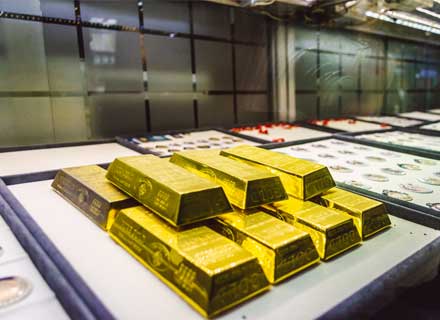Central banks across the world, investors, and jewellery buyers constitute a significant source of demand for gold. Financial institutions bought gold at the fastest rate since 1967 through 2022.
But compared to the 1990s and the first part of the 2000s, where these central banks were net sellers of gold, the acquisition figures of 2022 represent a sharp contrast. That year, these financial institutions snapped up gold at the fastest pace since 1967.
Why Do Central Banks Purchase Gold?
In the financial reserves of countries, gold is significant. These are three explanations for why central banks keep gold:
Keeping Foreign Exchange Reserves In Check
Central banks have historically held gold as part of their reserves to control the risk associated with their overall currency holdings and foster stability during economic headwinds.
Protecting Oneself From Fiat Money
Gold protects from the erosion of a currency’s purchasing power brought on by inflation, particularly the US dollar, which only gets stronger with every Fed rate hike, as seen in 2022.
Adding Variety To Portfolios
The value of gold is inversely correlated with that of the dollar. As a result, gold prices typically increase when the value of the dollar declines, shielding central banks from volatility.
Selling To Purchasing Transition
Central banks sold gold on the net in the 1990s and the first part of the 2000s.
Selling occurred for several reasons, including favourable macroeconomic circumstances and declining gold prices. In addition, strong economic growth reduced the value of gold’s safe-haven characteristics, and its low returns made it unattractive as an investment.
During the 1997 Asian financial crisis and the 2007–2008 financial crisis, central banks began changing their views on gold. As a result, annually since 2010, central banks have been net gold buyers.
Between 1999 and 2021, the top 10 official purchasers of gold accounted for 84% of all purchases made by central banks.
The major gold buyers since 2003 have been China and Russia, the adversaries of the United States. However, Russia increased its gold purchasing after being subjected to Western sanctions due to its Crimea invasion in 2014.
Under the Central Bank Gold Agreement (CBGA) framework, European countries like Switzerland, France, the Netherlands, and the United Kingdom were the most significant gold sellers between 1999 and 2021.
Which Central Banks Purchased Gold In 2022?
Central banks purchased a record 1,136 tonnes of gold in 2022, totalling over USD 70 billion.
Turkey was the biggest gold importer, which as of October 2022 has an annual inflation rate of 86%. They added 148 tonnes to their reserves. With escalating geopolitical tensions with the United States, China resumed its gold buying binge, adding 62 tonnes in 2022 November and December.
Nevertheless, emerging markets, which accounted for the majority of gold purchases, followed the trend that began in the 2000s. In contrast, two-thirds, or 741 tonnes, of official gold acquisitions in 2022 went unrecorded.
Analysts believe nations like China and Russia, attempting to de-dollarize international trade to get around Western sanctions, are the most likely sources of unreported gold transactions, which amount to almost 2/3rd of total gold purchases.

